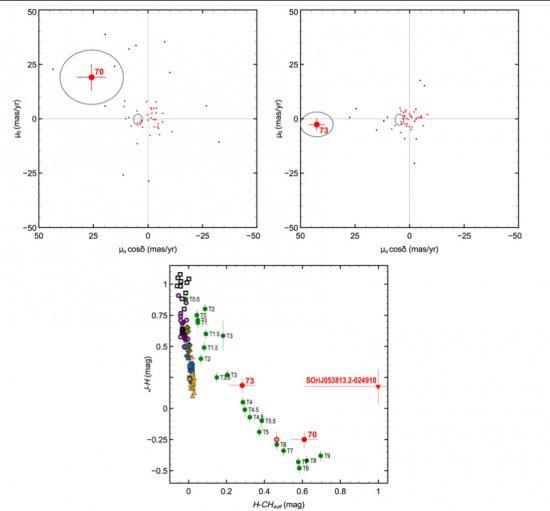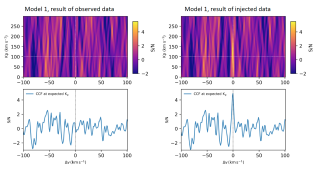The proper characterization of the least massive population of the young Sigma Orionis star cluster is required to understand the form of the cluster mass function and its impact on our comprehension of the substellar formation processes. S Ori 70 (T5.5+/-1) and 73, two T-type cluster member candidates, are likely to have masses between 3 and 7 MJup if their age is 3 Myr. It awaits confirmation whether S Ori 73 has a methane atmosphere. We aim to: i) confirm the presence of methane absorption in S Ori 73 by performing methane imaging; ii) study S Ori 70 and 73 cluster membership via photometric colors and accurate proper motion analysis; and iii) perform a new search to identify additional T-type Sigma Orionis member candidates. We obtained HAWK-I (VLT) J,H, and CH4off photometry of an area of 119.15 arcmin2 in Sigma Orionis down to Jcomp = 21.7 and Hcomp = 21 mag. S Ori 70 and 73 are contained in the explored area. Near-infrared data were complemented with optical photometry using images acquired with OSIRIS (GTC) and VISTA as part of the VISTA Orion survey. Color-magnitude and color-color diagrams were constructed to characterize S Ori 70 and 73 photometrically, and to identify new objects with methane absorption and masses below 7 MJup. We derived proper motions by comparing of the new HAWK-I and VISTA images with published near-infrared data taken 3.4?7.9 yr ago. S Ori 73 has a red H?CH4off color indicating methane absorption in the H-band and a spectral type of T4+/-1. S Ori 70 displays a redder methane color than S Ori 73 in agreement with its latter spectral classification. Our proper motion measurements are larger than the motion of Sigma Orionis, rendering S Ori 70 and 73 cluster membership uncertain. From our survey, we identified one new photometric candidate with J=21.69+/-0.12 mag and methane color consistent with spectral type > T8. S Ori 73 has colors similar to those of T3?T5 field dwarfs, which in addition to its high proper motion suggests that it is probably a field dwarf located at 170?200 pc. The origin of S Ori 70 remains unclear: it can be a field, foreground mid- to late-T free-floating dwarf with peculiar colors, or an orphan planet ejected through strong dynamical interactions from Sigma Orionis or from a nearby star-forming region in Orion.
Figure caption:Upper panels: Proper motion diagrams for S Ori 70 (left, Omega 2000/HAWK-I data) and S Ori 73 (right, ISAAC/HAWK-I data). The two objects of interest are labelled. All identifiedsources within an area of 4 arcmin2 around the targets are plo
Advertised on
References
A&A, 2011, in press



